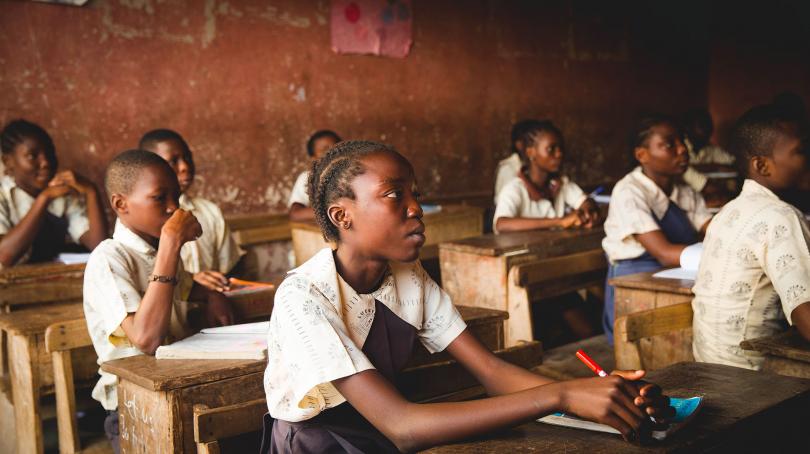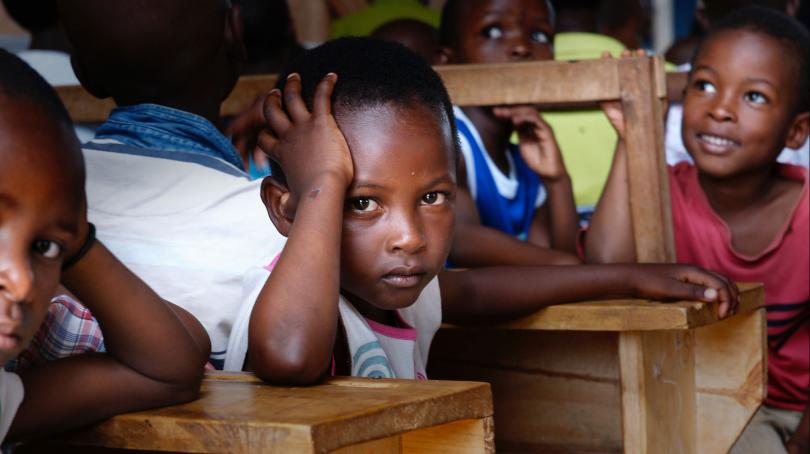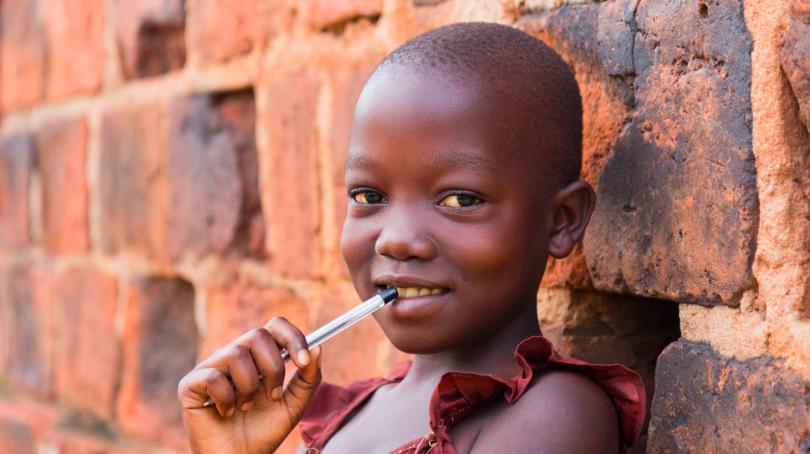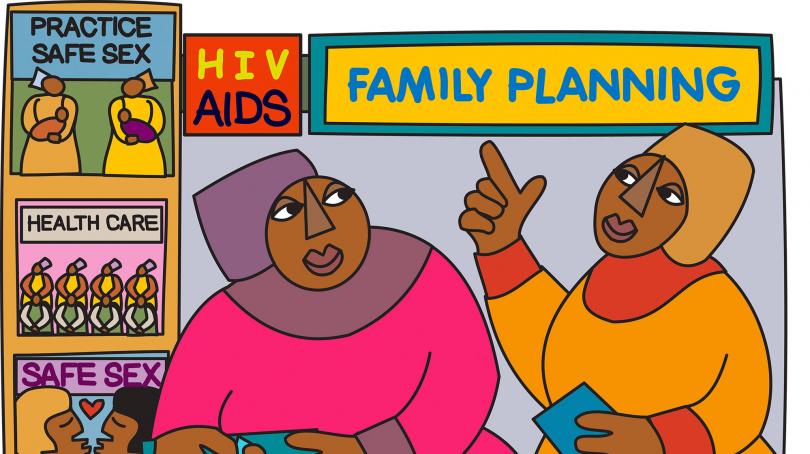Ambivalent relationship between HIV and education

Photo by Bill Wegener on Unsplash
Sub-Saharan Africa has the highest HIV rate in the world, but there is a lack of public healthcare systems and huge inequalities regarding healthcare. Besides direct impacts on health, the HIV epidemic has side effects on children’s education, affecting parental behaviour around the risk of getting ill, find the economists Renaud Bourlès, Bruno Ventelou, and Maame Esi Wood.
AIDS is the prime cause of mortality worldwide for adults aged between 15 and 59. In Sub-saharan Africa, it is an epidemiological trap: besides health and humanitarian consequences, it bars the way to economic growth. The epidemic also has strong impacts on education by depriving local schools of human and financial resources. In 2000, AIDS killed 85% of the 300 teachers working in the Central African Republic! Add this to the fact that affected parents can’t afford their children’s schooling and that, in the event of death, children are left as highly vulnerable orphans.
The impacts of HIV on education have been widely documented. According to a survey on girls’ education, school attendance in conventional structures is declining in African countries with high HIV prevalence (11% or more), and girls are the first to be affected. The study by Renaud Bourlès, Bruno Ventelou and Maame Esi Woode examines the data.
Risk is different from risk realization
Using econometric instruments, the authors study 105 regions in twelve African countries. They distinguish between patients diagnosed HIV-positive and HIV-negative. They think that the schooling choice parents make for their children is affected by conditions in their environment, especially by health factors. How might HIV prevalence in the region influence their decisions? For a non-carrier parent, does a rise in HIV prevalence change schooling choice?
At first glance, the results may appear paradoxical. The more AIDS affects the region, in rural areas, the more non-carrier parents send their children to school1, especially the closer we get to the geographic origin of the epidemic. In East Africa, there is greater awareness of AIDS, more prevalent here than in Western Africa. The authors make the assumption that parents know the HIV prevalence in their regions and interpret this choice as a way for non-affected parents to anticipate the budget that the illness will require. Conversely, those who have been diagnosed HIV-positive take their kids out of school because of money constraints.
The economists take the approach of distinguishing the effect of prevalence (the probability of getting ill) from the effect of risk realization (contracting the illness). Macroeconomic studies and most non-governmental surveys jointly analyse people diagnosed as HIV+ and HIV- when they investigate the effect of prevalence. But as the authors show, those who don’t have the disease act differently and give their children more schooling than the HIV-positive. This effect, if not taken into count, could bias the results.
- 1The authors control for many variables to avoid bias. For instance, they reduce the heterogeneity of their sample. The twelve countries present high discrepancies in terms of characteristics (education, social or health systems). Those properties have to be accounted for to avoid influencing the results.

Photo by Doug Linstedt on Unsplash
Child income appropriation
In rural areas, the length of schooling increases with HIV prevalence. The relationship can appear counterintuitive, but economists interpret the investment in children’s education as a guarantee against health risks. In the absence of a true health insurance system, education acts as insurance against the AIDS risk. Once they have graduated, children support their parents economically.
The economic analysis relies on “Child income appropriation” to define how parents rely on their children’s income, a “right” that differs depending on their health or their material and financial situations. This concept is a way of interpreting the informal monetary transfers replacing the official social transfers we find in western countries. In Europe, regardless of income, everyone is entitled to welfare and healthcare services, whereas in Africa, social benefits and infrastructures are lacking.
Many studies show that there is even more income appropriation in rural areas. In the survey, the positive relationship between prevalence and education is only visible in rural contexts and for children under 17. Once they go to University, their parents don’t have a say. In the cities, the relationship is the opposite: illness prevalence negatively impacts schooling, which is chosen according to income constraints rather than as a form of health insurance.

Photo by Bill Wegener on Unsplash
A normative issue?
African norms generally lead to redistribution in children’s income. In Europe, your pay doesn’t have to be redistributed among your family or relatives. In most African countries, general views of personal enrichment are different. Development economics underlines how interpersonal relationships and solidarities generate wealth redistribution. Helping the family and social network is sometimes seen as a form of unemployment insurance, pension or health system, like those the European Welfare States built. Consequently, migrant income is partially transferred to the family who remain at home. The total amount of these transfers is high, making them the second source of funding in developing countries. In some countries, this amounts to 80 to 750% more than international public aid2.
- 2Banque africaine de développement, 2008, "Les transferts de fonds des migrants, un enjeu de développement"

Photo by Adam Ján Figel' on Adobe Stock
Health, a priority for development
Such mutual assistance makes sense under the emergency situations African families have to face. In response to the consequences of HIV on health, development and education, the international community has supplied massive quantities of antiretroviral treatments. Health support has strongly increased from 5.6 trillion dollars in 2001 to 35.2 in 2014, according to the University of Washington3. Nevertheless, much remains to be done if citizens of developing countries are to benefit from real healthcare access.
The lack of state infrastructures and social programs, added to the health crisis in Sub-Saharan areas, is leading populations to manage problems differently. Informal and intergenerational transfers are sometimes the only way to make up for the inadequacies of the system. But depending on the situation, child income appropriation can have unexpected consequences. HIV’s indirect effect on education needs to be carefully analysed to distinguish between illness and prevalence.
- 3Dieleman J.-L., Graves C., Johnson E., et al., 2015, "Sources and Focus of Health Development Assistance, 1990–2014", Journal of the American Medical Association (JAMA)

Photo by tntdesigns on Adobe Stock













